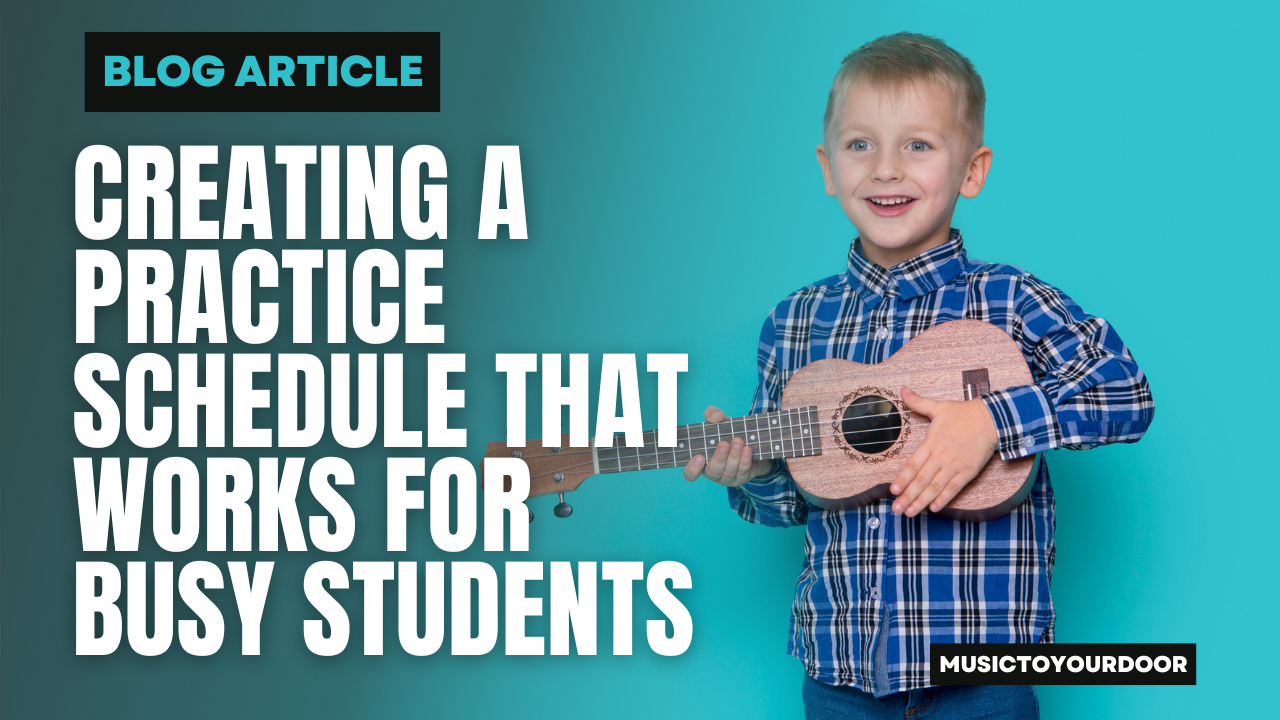How can you keep up with music practice when life feels like a non-stop to-do list? If you’re juggling school, sports, a part-time job, and somehow trying to squeeze in your scales and arpeggios, you’re not alone. For many Australian students, especially those involved in music, dance, or the arts, balancing everything can feel impossible.
The good news? Creating a practice schedule for busy students isn't just doable—it can actually make your life easier. With a structured routine, you’ll practise more consistently, feel less stressed, and improve faster. In this article, you’ll find real-life strategies, Aussie examples, and expert-backed tips to help you manage your time and get the most from every practice session.
Why Busy Students Struggle with Consistent Practice
If practice is so important, why is it always the first thing to get dropped?
Balancing school and music isn’t easy. Here are the three most common reasons students fall behind in their practice schedule:
Too Many Priorities, Not Enough Time
Between class timetables, extracurriculars, part-time jobs, and social life, most Aussie students have schedules that rival full-time professionals. This lack of free time makes it hard to prioritise daily practice routines.
Lack of Structure or Clarity
Even when students find time, they often don’t know what to work on. Without clear goals or a structured plan, it’s easy to waste time or lose motivation.
Overwhelm Leading to Procrastination
When a task feels too big or too far behind, many students avoid it altogether. This is where a realistic, personalised practice schedule for busy students becomes critical.
How to Set Realistic Practice Goals That Stick
Want to actually follow your schedule? Start with goals that feel doable.
The key to success isn’t longer hours—it’s smarter goals. Here’s how to make sure your practice goals work for you:
Focus on Micro Goals Over Long Hours
Instead of committing to "an hour every day," try breaking it down:
-
Monday: 15 mins scales
-
Wednesday: 20 mins new repertoire
-
Friday: 10 mins review + 10 mins sight reading
This builds momentum and keeps overwhelm at bay.
Use SMART Goals (Specific, Measurable, Achievable, Relevant, Time-Bound)
Don’t just say "get better at piano."
-
Instead: "Practise arpeggios in G major for 10 minutes every Monday for 4 weeks."
Align Goals With Your School Calendar
Be realistic. If exams are coming up, scale back. If holidays are near, ramp up. The most effective study schedules are the ones that adjust with your life.
How to Build a Weekly Practice Schedule That Works
You don’t need a perfect plan. You just need a practical one.
A good practice schedule for busy students is flexible, simple, and built around your real life.
Step 1: Identify Your Core Commitments
List your weekly non-negotiables: school hours, sports, tutoring, part-time work. These are your "fixed blocks."
Step 2: Block Out Small Windows for Practice
Use leftover gaps in your day:
-
20 mins before dinner
-
15 mins after school
-
Saturday morning
Even short sessions count if they’re consistent.
Step 3: Assign Goals to Each Practice Block
Use the micro goals mentioned earlier. Be clear about what you’ll focus on each day.
Step 4: Stay Flexible but Consistent
Life happens. If you miss a day, don’t panic. Just adjust and move on. Consistency beats perfection.
Productivity tips for music students show that flexibility is a major factor in sticking to a routine.
Time-Saving Tips for Smarter Practice
Think you need an hour a day? Think again. It’s about quality, not quantity.
Try the Pomodoro Technique
This method breaks practice into 25-minute focused sessions with short breaks. It helps maintain concentration and fits perfectly into tight schedules.
Prioritise Warm-Ups and Difficult Sections
Don’t waste time playing what you already know. Start with warm-ups, then tackle your hardest pieces.
Use Tech Tools to Maximise Time
Apps like Tonal Energy, Soundbrenner, or even Google Calendar can:
-
Track your daily practice routine
-
Set reminders
-
Log your progress
These tools boost your time management for students without adding pressure.
Real-Life Stories From Australian Students
What does this look like in real life? Here are three Aussie students making it work:
High School Student Preparing for AMEB Exam
Amara, a Year 11 student in Perth, balances school and Grade 7 violin. She practises 20 minutes four times a week using the Pomodoro technique. Her schedule shifts around exam time but always includes review days.
University Music Major Balancing Gigs and Study
Daniel, a jazz saxophonist in Melbourne, works part-time and performs weekends. His practice slots are built into his Uni calendar—he uses campus rooms to sneak in 30-minute sessions between classes.
Teen in Rural QLD With Weekend Lessons Only
Sophie lives in Toowoomba and only gets in-person piano lessons once a week. She relies heavily on digital tools to track her progress and sticks to short 15-minute sessions each day.
All three show how a consistent daily practice routine helps, no matter your situation.
Common Mistakes to Avoid When Creating a Practice Schedule
Even a great plan can fail if you fall into these traps.
Mistake #1: Setting Unrealistic Practice Times
Don’t aim for 90 minutes if you can barely spare 20. Start small, then build.
Mistake #2: Not Allowing for Breaks or Flexibility
Rigid schedules lead to burnout. Rest days are just as important for progress.
Mistake #3: Failing to Track Progress
Without tracking, it’s hard to improve. Keep a practice log—even a notebook will do.
Following these productivity tips for music students helps make your practice schedule for busy students truly sustainable.
Final Thoughts: Your Schedule, Your Success
There’s no perfect routine—just one that works for you.
Whether you’re a Year 10 clarinet player in Adelaide or a uni vocalist in Brisbane, your success starts with a plan that fits your life. The trick is to:
-
Start small
-
Be flexible
-
Practise consistently
Experiment. Adjust. Keep showing up. That’s what makes the difference.
